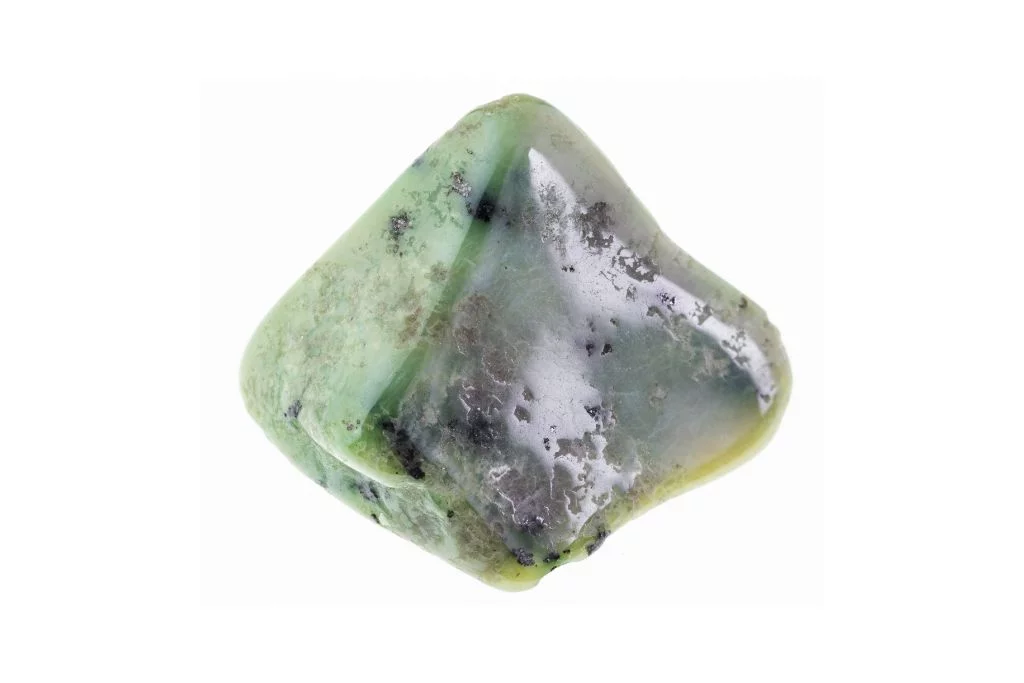Color and Appearance of African Jade
African Jade, also known as Transvaal Jade or Grossular Garnet, exhibits a striking green color that ranges from a pale, seafoam green to a rich, deep emerald hue. This vibrant coloration is one of its most distinguishing features, often rivaling the beauty of true jade. The intensity and shade of green can vary depending on the specific mineral composition and origin of the stone.
Crystal Structure and Formation
Despite its name, African Jade is not actually a type of jade but belongs to the garnet family. It typically forms in metamorphic rocks and has a cubic crystal system. The stone often occurs in massive form, meaning it lacks a defined crystal shape and instead forms in solid, compact masses. This characteristic contributes to its smooth, polished appearance when cut and shaped.
Unique Physical Characteristics
One of the most notable features of African Jade is its translucency to opacity. Unlike some other gemstones, it rarely appears completely transparent, giving it a mysterious, cloudy quality that enhances its allure. The stone also possesses a vitreous to resinous luster, which gives it a glossy, glass-like shine when polished.
Distinctive Patterns and Inclusions
African Jade often displays interesting patterns and inclusions that add to its visual appeal. Some specimens may exhibit subtle banding or mottling, creating a unique play of light and shadow across the stone’s surface. Occasionally, specimens may contain small, contrasting mineral inclusions, which can create captivating visual effects and add to the stone’s individuality.
Hardness and Durability
With a hardness of 6.5 to 7 on the Mohs scale, African Jade is relatively durable, making it suitable for various jewelry applications and decorative objects. This resilience, combined with its attractive appearance, contributes to its popularity among gemstone enthusiasts and collectors.
Historical and Cultural Significance of African Jade
African Jade, also known as Transvaal Jade or Buddstone, has been revered in various African cultures for centuries. Despite its name, it is not true jade but rather a type of green quartz. This stone was highly prized by ancient African tribes for its vibrant green color, which was associated with growth, fertility, and the natural world. In some regions, it was used in ceremonial objects and worn by tribal leaders as a symbol of status and connection to the earth.
Metaphysical Associations
In the realm of crystal healing and metaphysics, African Jade is believed to possess powerful energetic properties. It is often associated with the heart chakra and is thought to promote emotional balance and harmony. Many practitioners claim that this stone can help release negative emotions and foster a sense of inner peace. African Jade is also believed to enhance intuition and spiritual growth, making it a popular choice for meditation and energy work.
Common Uses and Benefits
Today, African Jade is widely used in jewelry and decorative objects, prized for its rich green color and smooth texture. In alternative healing practices, it is often used in the form of tumbled stones, palm stones, or crystal grids. Some people carry African Jade as a pocket stone for its purported stress-relieving properties. It is also popular in crystal-infused water bottles, as it is believed to imbue water with its healing energies. Many users report feeling more grounded and centered when working with this stone.
Traditional and Modern Applications
Traditionally, African Jade was used in tribal medicine to treat various ailments, particularly those related to the heart and emotions. In modern times, it has found its way into holistic healing practices and is often used in Reiki and crystal therapy sessions. Some crystal enthusiasts use African Jade in their homes or offices to create a harmonious environment and promote a sense of well-being. Its connection to nature makes it a popular choice for gardeners and plant enthusiasts, who sometimes place the stone among their plants to encourage growth and vitality.

